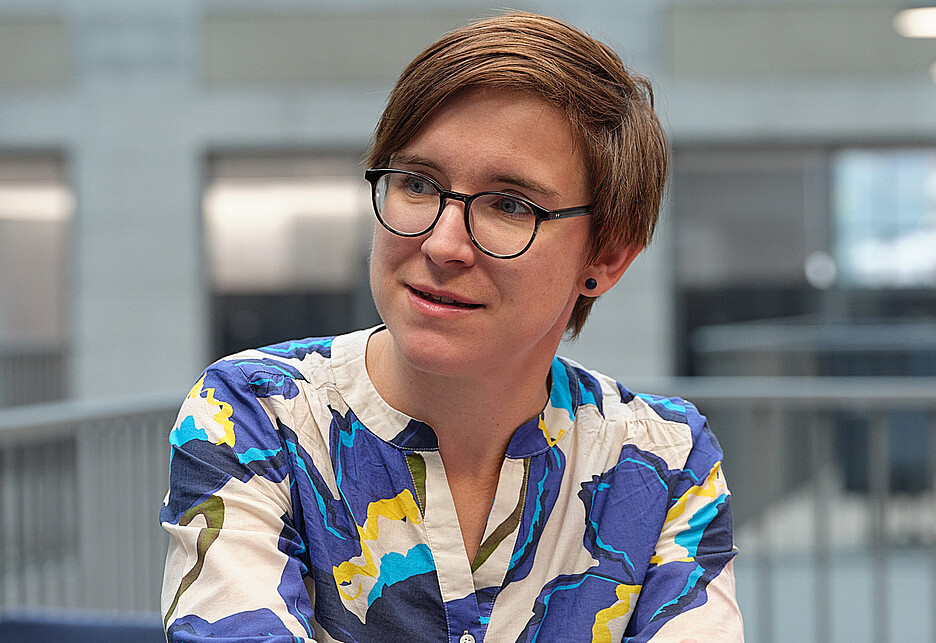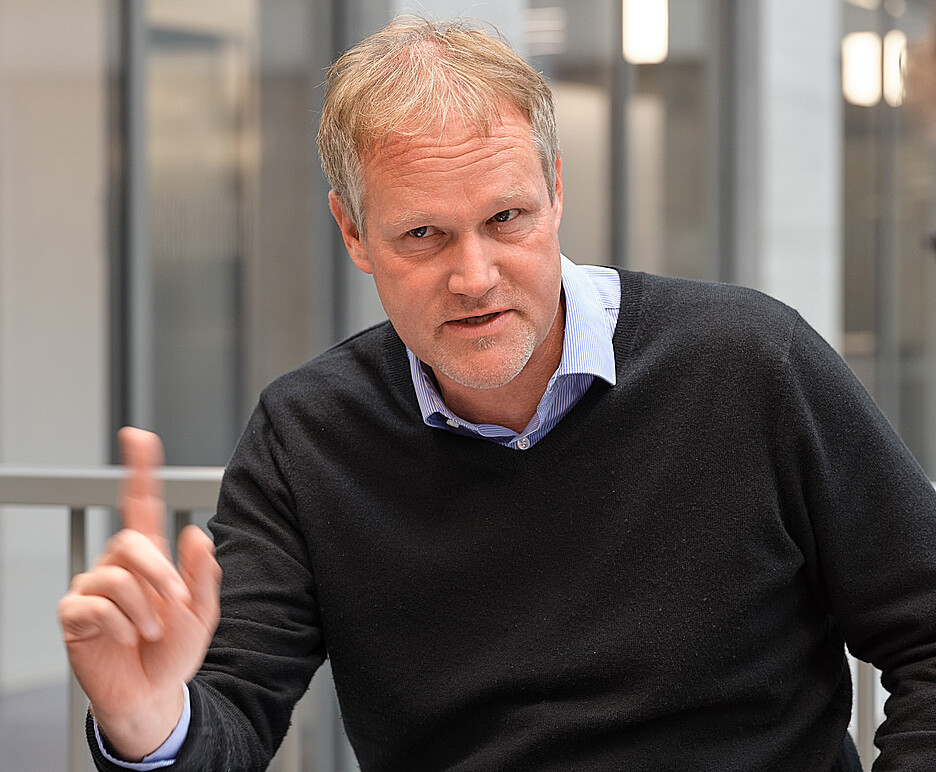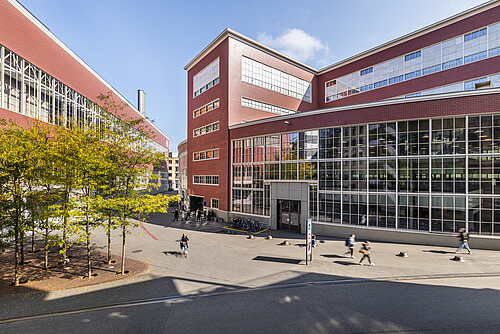
“Both science and society benefit from open science”
Today, universities have to make the results of their work freely accessible under the postulate of open science. While the opening up of information is desirable, it is not yet easy to realise.
The ZHAW has been committed to open science since 2018. How are you experiencing this change of culture in your everyday work?
Julia Krasselt: Some of my projects deal specifically with open research data. These include the Swiss-AL project, a language database that is to be shared with researchers from other fields. I believe that open science enriches interdisciplinary collaboration. At the same time, however, there are many new issues for researchers to deal with, such as data projection, copyright law, the choice of repositories* and data formats.
Gabriela Lüthi: We advise researchers and lecturers on all aspects of open science, for example with respect to their choice of publication platforms and financing applications for open access. If we are involved at an early stage, researchers can save a great deal of time and can draw on our extensive expertise in the area of open science in a targeted manner.
Claudio Cometta: I’m generally very interested in the subject of open science, as my team conducts a considerable amount of research and we publish a lot. However, we are chiefly concerned with open innovation. The relationship between open innovation and the open science movement is the subject of significant controversy. The term open innovation primarily means that companies design their innovation processes in a manner that goes beyond the boundaries of their own organisation. Universities can play an important role here as innovation partners.
Open science sounds like a noble goal. However, does this not run contrary to what researchers have previously considered as successful publishing?
Krasselt: It is a stereotype that researchers keep their results and data secret out of fear that somebody else might build on them and produce something better. In the field of applied linguistics, in particular, there were pioneering projects before the notion of open research data even existed. For example, language data collections, referred to as corpora, that have been created for the research community, as we know that this data can answer a wide range of very different questions, for example about grammar or language use.
Cometta: Sharing research data is by no means a contradiction to successful publishing. In fact, I’d say it is a prerequisite for it. We have been active in the field of non-technical energy research for a number of years and are often involved in research consortia with other universities and partners from industry here. Sharing data is frequently a requirement for being able to participate in such consortia.
Lüthi: At present, around 60 percent of the ZHAW’s scientific publications are publicly accessible. If you include non-independently peer-reviewed publications, this figure stands as high as 70 percent. While we can be proud of these numbers, we must not forget that the open access movement is already 20 years old.
The aim of the national strategy was that the findings and results from government-funded projects be public by the end of 2024.
Lüthi: That is rather unrealistic, but we are on the right track. At the ZHAW, some 85 percent of articles from the fields of engineering and life sciences are already publicly accessible, and around 66 percent from the social sciences. A higher share would be possible, but researchers find themselves under pressure to not just publish anywhere, but rather in prestigious journals.

“As things stand, some open science principles are only compatible with legal frameworks to a limited extent.”
Open science has seen a paradigm shift in the financing of specialist literature: it is no longer reading that costs money, but rather publishing. Doesn't that make you dependent on the scientific publishers?
Lüthi: In the past, we had to pay for reading with subscriptions. Today, we have so-called read-and-publish agreements (R&P) with publishers. This means we can read the journals and articles and can also publish work in certain journals. Publishing is limited, however. It was believed that the open access movement offered a way out from increasingly expensive subscription prices. But with the R&P agreements, we are, of course, continuing to support the major publishers such as Elsevier, Springer and Wiley and are dependent on them. However, there is also an alternative, which is referred to as diamond open access. With this approach, neither reading nor publishing costs anything. Instead, funding organisations finance the platforms on which publications can be made.
This has the potential to relativise the power of traditional journals.
Lüthi: Yes. The Swiss National Science Foundation (SNSF) announced this year that it does not intend to continue funding R&P agreements to the same extent. It also took a long time for the deal between swissuniversities and Elsevier to be concluded. As a university, you have to take a stance and consider whether to pursue alternative paths. Would we have been prepared to stop publishing with Elsevier?
Cometta: I think that would be a very considerable hurdle to overcome. If you are no longer able to publish with the big players, you have a problem as a university. Researchers do not choose their publication platform according to the publisher, but rather on the basis of the relevance the individual journal holds.

“Sharing research data is by no means a contradiction to successful publishing. In fact, I’d say it is a prerequisite for it.”
The aim of the Swiss National Open Research Data Strategy is to make research data freely accessible. State research funding organisations such as the SNSF and Innosuisse make this a requirement for the projects they fund. Is this desirable for a university of applied sciences which has industrial partners, or are they running the risk of losing them with this?
Cometta: In the area of economics, these conflicts of interest with industrial partners existed long before the open science era. Classic Innosuisse projects, which are intended to promote innovation in the economy but are also research based, are one such example. The solution is to reach an agreement on the degree of openness for each individual project.
Lüthi: It is important to assess which data is relevant for the public. It would not be in the interest of the ZHAW to disclose all data in full. Here, too, you can save yourself a great deal of time and effort if you seek advice from the Research Data Management Service Centre and make use of a data management plan in a systematic fashion from the outset. At the ZHAW, we are organised on both a centralised and decentralised basis: in addition to the competence centres for open access and open educational resources and the ZHAW Research Data Services team, there are also people responsible for research data within the Schools who support researchers in the area of open data. This is important, as there is rarely a single solution that will work for everybody. The questions are often very subject-specific.
So, in principle, there is a willingness to make research data freely available?
Cometta: Absolutely. The main hurdles are data protection and the additional work involved – this is perhaps an explanation as to why open science is still less widespread in social sciences than is the case in the MINT disciplines: the less standardised or the more heterogeneous the data is, the more effort is required to make it accessible. The data needs to be prepared and you have to provide context, which entails an enormous additional effort.
Krasselt: It has only been since recently that open science has even been considered in the planning of research projects – there is certainly still room for improvement here. When working as part of a consortium, it is important to set up the project correctly from the outset and to discuss the issue of governance. It is fantastic that we are able to focus on such aspects thanks to the current funding from swissuniversities*. In the past, it was difficult to consider open science when budgeting for projects.
Lüthi: The funding is important, as it provides an initial spark. However, we also need to think about how we are going to establish the practice in the future. If universities are committed to open science, they also need to provide the resources and services to make it possible.
In the summer, the SNSF announced that only 23 percent of the projects it funds publish research data. What might be the reason for this?
Lüthi: I think that many people still do not know which data they are allowed to publish and they thus worry about potentially doing something wrong. However, there may also be data protection, contractual or commercial reasons that speak against publication.
Krasselt: As things stand, some open science principles are only compatible with legal frameworks to a limited extent. In the case of our Swiss-AL project, for example, we are unable to simply upload the data to a repository, as the texts are subject to copyright protection. Different legal frameworks are also sometimes applicable to international projects. In the majority of cases, the stricter rules are then applied, which can run counter to the university’s own open research data strategy. It is important that various small-scale solutions are not sought in parallel, but rather that good practices for the handling of research data are developed as part of a larger community – this is already the case in the social sciences and the humanities.
Lüthi: We are still in the development phase when it comes to open research data. Finding good solutions is not easy: you need to create a national infrastructure that meets both disciplinary requirements and international standards, ensuring that data can be exchanged. An individual institution can’t shoulder this responsibility on its own. We need national consortia with international networks. The current funding provided by swissuniversities takes this into account.

«The university must not leave its researchers to grapple with these new requirements on their own.”
Who benefits most from open science?
Cometta: The world of science and the general public certainly benefit. With respect to open access, it is primarily universities from the Global South that were previously unable to afford access to scientific journals that will be able to capitalise. There are also the research-related institutions that utilise and multiply scientific findings.
Lüthi: The coronavirus pandemic is a good example: all research results were published in a freely accessible manner, as it was of global interest to combat the virus. Everyone benefited from this: not only the scientific community, but also society, as the vaccines were developed extremely quickly.
Starting from the premise of open science that scientific knowledge belongs to the general public: are scientific journals, which mostly appear in English, the right approach for the general public?
Krasselt: I don't think so. The data and research results need to be processed in a completely different way. A good example is “Switzerland’s Word of the Year,” for which the Swiss-AL language database is used. It is a high-profile project that scientifically analyses which words in Switzerland’s four national languages reflect social developments in the year in question.
Lüthi: I also believe that scientific findings should not only be disseminated via publications and open research data. They need to be made available in an easily accessible manner. The University Library, for example, is open to the general public and we also organise public events on scientific topics. The ZHAW is also a member of the European Coalition for Advancing Research Assessment (CoARA*). Among other things, the aim of this coalition is to encourage researchers to think more about open science. In other words, they should make more contributions to scientific communication and policy advice, with such a commitment being recognised extra in the evaluation of their performance. Scientific communication represents a challenge for many researchers, however.
Cometta: When I see how social media can be used as a multiplier for research results, I think that the younger generation of researchers have a completely different understanding of their role and a greater awareness that a transfer of knowledge has to take place.
Krasselt: During a recent workshop, some of the older researchers were struggling with the new requirements. Today, it is almost assumed that you have programming skills and are active on social media. Open science places a large number of demands and I believe that the various generations perceive these very differently.
Lüthi: The university must not leave its researchers to grapple with these new requirements on their own. It would be appropriate to give time credits for handling these demands, or at least to offer opportunities for continuing education in this area.
Glossary
Repository
A publicly accessible electronic archive for saving and publishing articles in scientific publications or research data. Repositories can be maintained in a variety of ways, for example by subject area or on an institutional, national or international basis.
Read-and-publish agreements (R&P)
Agreements between scientific publishers and research institutions governing access to subscribed journals (read) and the right to publish in them (publish).
Funding from swissuniversities
Swissuniversities, the umbrella organisation of universities in Switzerland, is currently funding the development of an open research data infrastructure as part of the Swiss National Open Research Data Strategy.
Coalition for Advancing Research Assessment (CoARA)
An international initiative involving several hundred organisations that advocates a more appropriate evaluation of research, for example by placing greater focus on more diverse achievements and contributions and moving away from the currently dominant emphasis placed on publication figures and the associated university rankings.
Cost transparency through open APC
The ZHAW publicly documents the fees (article processing charges, APC) that it pays for open access publishing. The ZHAW University Library maintains a central open access publication fund for the publication fees.


0 Comments
Be the First to Comment!